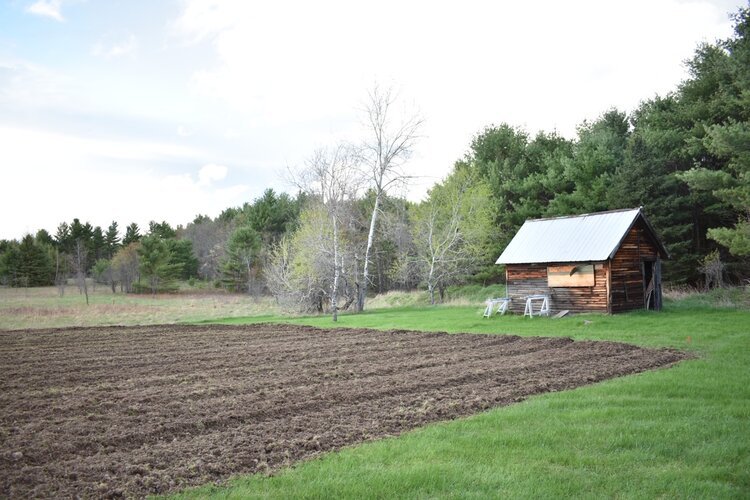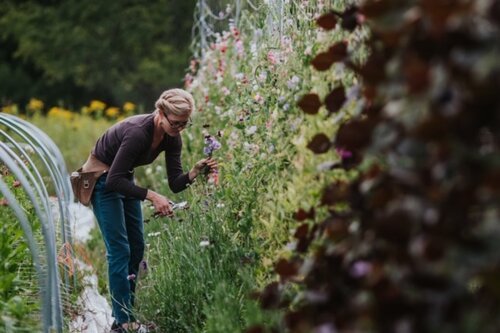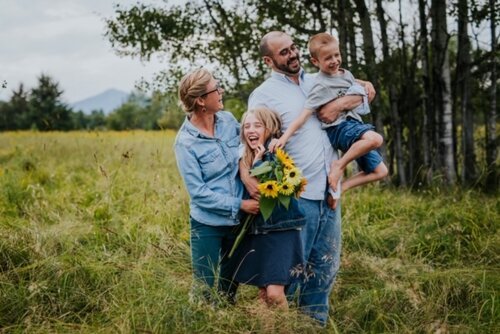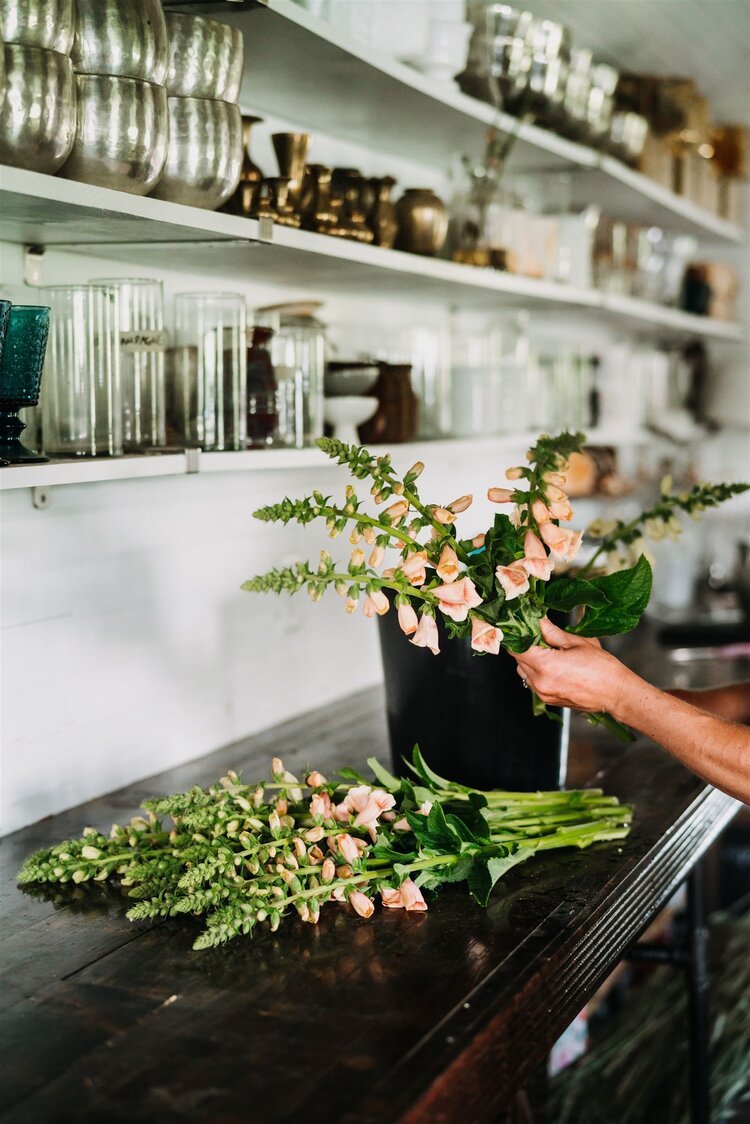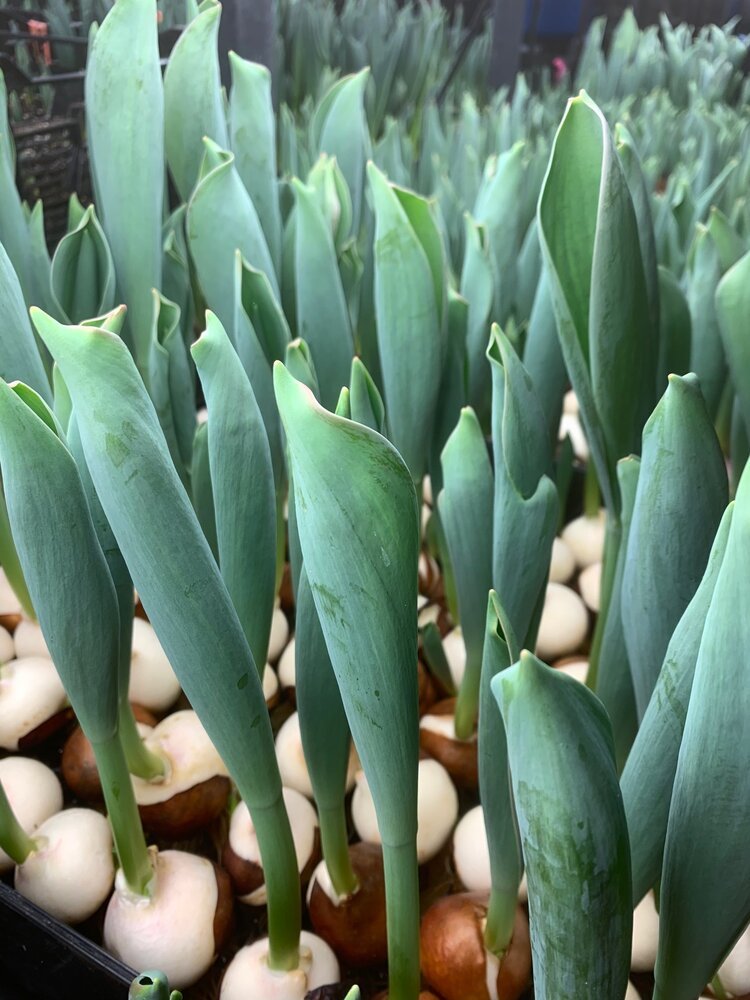growing a flower farm in the adirondacks
I’ve been meaning to make some sort of record of how we’ve grown our farm. So here is a sort of break down of the major events each year in terms of staffing and investments in infrastructure:
2017:
-Employees: 1 full time (me).
-Closed on our 2.5 acre property in northern New York in May.
-Moved in and broke ground with the generous help from a local dairy farm who sent their machines up the road with a tractor.
The first plow on the farm helped me start 3 plots around the house. We’ve since added an acre +(seen behind this plot) for more cut flower cultivation. Two greenhouses now sit on the plot you see here.
-Moved a lot of compost by shovel and wheel barrow and tilled the beds in with a walk-behind tiller
-Sold flowers at a couple local farmers’ markets and flowered our first events (I’d consider them to be micro-weddings in comparison to what we do now).
-purchased a small trailer and turned it into a “walk in cooler” for flower storage.
-built 12, 4ft tall low tunnels over flower rows to protect crops and extend the season.
2018:
-Employees: 1 full time, year-round (me), 1 full time in-season assistant farmer-florist, additional free-lance designers hired to help with larger events.
-Built our first larger tunnel (14ftx90ft).
I filled that first greenhouse tunnel with dahlia plants.
-Purchased a compact John Deere tractor
2019:
-Employees: 1 full time, year round (me), 1 full time farmer-florist in season, and 1 part time employee in season, additional free-lance designers hired to help with larger events.
-Added 2 more 14ft x 90ft unheated greenhouse tunnels over existing flower beds for season extension
-Cleared the back meadow of our property for an additional acre+ of growing space. Added cover crop and planted some cold hardy flowering shrubs into the new space.
-Purchased a 4ft wide reverse tiller attachment for the tractor.
-Completed phase 1 (the ground work and concrete slab) of a small, multipurpose barn measuring 24ftx30ft.
-Added a 12ft x 20ft pre-fabricated shed and finished it to serve as a year-round design studio.
Flower prep and vessel storage in the new studio space. Photo by Due West Photography
2020:
-Employees: 1 full time, year round (me) and a part time helper (spring, fall, and winter)
-Planted into the back meadow, tripling our space for annual flower cultivation.
-Built 2 more greenhouse tunnels and added electric, heat, lighting to one for year-round growing.
-Started our first hydroponic trial.
We’re learning a lot and enjoying seeing how different varieties perform in this hydroponic tulip trial.
2021: (hopes and dreams)
-Employees: 2 full time, 2-3 part time
-Complete construction of the multipurpose barn for bulb and flower storage, tool storage, tractor parking, indoor large project space.
-Find an appropriate indoor space for an expanded hydroponic growing set-up.
-Begin the transformation of our perennial beds into a formal garden. This will require digging up all the plants, leveling the space with some large machinery, designing the beds and walkways, and re-planting the perennials.
-Add the final 2 greenhouse tunnels to bring our total fleet up to 7 - the number I’m comfortable with here, given the soil and topography of our land.
-Construct a small greenhouse tunnel for storage space with the extra parts from the kits we’ve built and altered to suit our needs (sometimes we shorten greenhouse kits to fit our beds. We’ve been saving the extra parts to make a storage space.)
So that’s where we’ve been and where I hope we’re headed. If we learned anything in 2020, it’s that we have to be flexible and willing to adapt. I’m not willing to commit to any of this year’s plans as if they are “resolutions,” but it feels good to have some direction and share my intentions. We’ll keep you posted!
Best,
Banner image by Due West Photography

